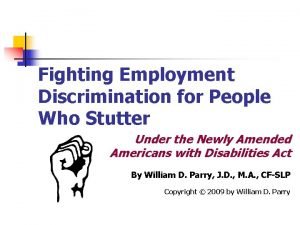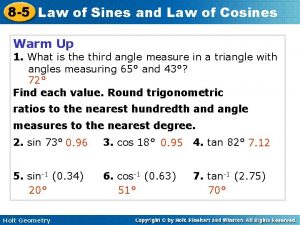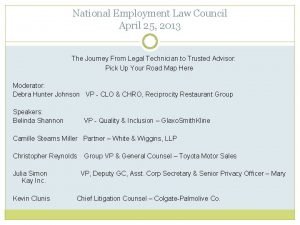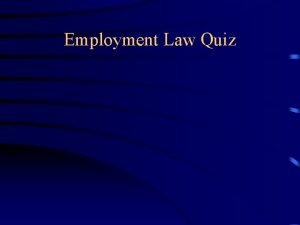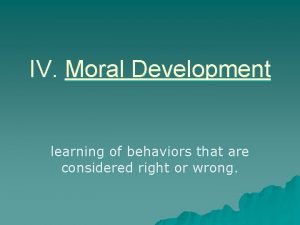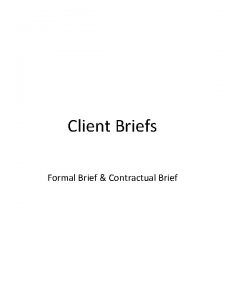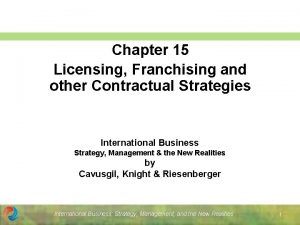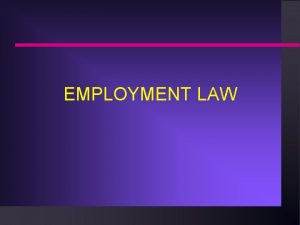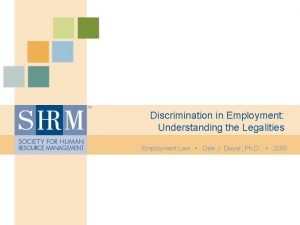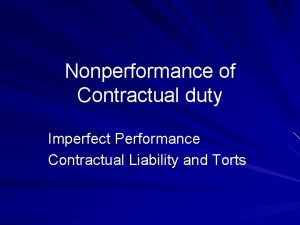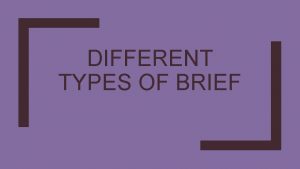Employment Law Discrimination Discrimination Normal practice in contractual











- Slides: 11

Employment Law ‘Discrimination’

Discrimination… Normal practice in ‘contractual relationship’ for contractors to have ‘freedom of contact’ – i. e. you can contract with whomever you wish! However, in Employment, there are times when the law intervenes and place control over the relationship (Discrimination Law). At what stage of employment does the law forbid discrimination?

Policies & Practices… Examples of discriminatory policies and practices: • • • Lack of promotion/training Different pay, terms and conditions between the opposite sex Recruitment (advert, interviews etc) Dismissal Retirement ages Dress code Age requirements Harassment Victimisation Selection for redundancy

Unlawful Discrimination… The Equality Act 2010 tidied the legal framework on Discrimination Laws. The Act prohibits less favourable treatment based on the following protected characteristics: 1. 2. 3. 4. 5. 6. 7. Gender or sex, marital status, gender reassignment, pregnancy or childbirth. Race, colour, nationality, ethnic or national origin. Disability. Sexual orientation, religion or philosophical beliefs. Age. Civil Partnership. On basis of ‘part time’ and ‘fixed term’ nature of employment

Discrimination – Types… • Direct Discrimination Less favourable treatment on one of the protected characteristics, e. g. not employing someone because they are a young woman who may decide to have children. • Indirect Discrimination This is when a provision, practice or a condition is applied equally to both sexes/racial groups but the application of that condition has a disproportionate adverse impact on the other group and cannot be justified. • Harassment Is conduct which has the purpose or effect of violating your dignity and creating a hostile, degrading or intimidating environment.

Discrimination… • Perception – e. g. not promoting someone because it is believed they are gay, but in fact they are not. • By Association – harassing someone because he has gay friends. • Discrimination by victimisation is also illegal – i. e. bringing proceedings or assisting in the bringing of proceedings or making a complaint under the act.

Discrimination… There are certain exceptional circumstances where being of one sex or racial group is a Genuine Occupational Characteristic so that job offers (only) may be restricted to that group, e. g. • The nature of the job – modelling clothes • Considerations of decency and privacy – toilet attendant • The nature of the establishment – single sex hospital

Remedies… Employment Tribunals have power to: 1. Make an order declaring the rights of the parties 2. Require the employer to pay compensation (unlimited and can claim for injury to feelings) 3. Recommend employer takes action within a specified period to obviate or reduce the adverse effect of the discrimination

Disability Discrimination… Disability is defined as someone having “a physical or mental impairment which has a substantial and long-term adverse effect on his ability to carry out normal day-to-day activities” • Mental Impairment – were ‘clinically well recognised’ illnesses. • Psychopathic or anti-social disorders are not covered. • Nor are addictions (drugs, alcohol, sex).

Disability Discrimination… • It is also unlawful discrimination where an employer fails to make reasonable adjustments e. g. wheelchair access, reallocation of some duties, altering working hours etc. • Employers are not, however, expected to make their arrangements and premises ‘disability proof’. • Cost, practicability, effectiveness of the adjustment etc will be taken into consideration.

Age Discrimination… • Aim is to maximise the participation & economic contribution of groups that have been subject to discriminatory practices in the past. • Some age-based practices will, however, be able to be objectively justified – this means the employer will need to show that their requirement is appropriate & necessary in fulfilling a legitimate aim.
 Is stuttering a disability under the ada
Is stuttering a disability under the ada Lesson 8-5 practice b law of sines and law of cosines
Lesson 8-5 practice b law of sines and law of cosines National employment law council
National employment law council Basic employment law quiz
Basic employment law quiz Employment law alliance handbook
Employment law alliance handbook Newton's first law and second law and third law
Newton's first law and second law and third law Newton's first law and second law and third law
Newton's first law and second law and third law V=k/p
V=k/p Boyle's law charles law avogadro's law
Boyle's law charles law avogadro's law Legalistic orientation
Legalistic orientation Is in brief formal
Is in brief formal Licensing franchising and other contractual strategies
Licensing franchising and other contractual strategies
